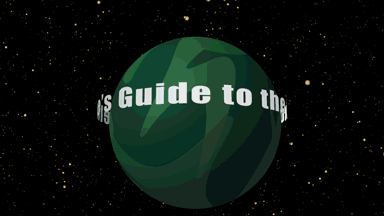Scienceline’s Guide to the Exoplanets: The Boiler Room
Gliese 876 d: A "super-Earth" that's nothing like Earth
Rahul Rao • April 22, 2020

Your favorite planets, and you didn't even know they existed. [Credit: Curtis Segarra | CC BY-NC-ND 2.0]
The Boiler Room
Gliese 876 d
Discovered by: Eugenio Rivera, et al.
Discovered: 2005
Distance from Earth: ~15 light-years
Mass: ~6.9 Earth masses (~0.02 Jupiter masses)
Surface climate: A mystery
Habitability for humans: No.
For this week’s exoplanet, we’re looking at another planet that’s virtually the Solar System’s upstairs neighbor.
Gliese 876 d is the innermost of four known planets orbiting a red dwarf just fifteen light-years away. It’s a curious system, not least because the timing of the other three planets’ orbits falls neatly into a 1:2:4 pattern — similar to Io, Europa, and Ganymede around Jupiter. It’s where some scientists think ‘Oumuamua, the mysterious cylindrical object that recently tumbled through the Solar System from interstellar space, may have come from.
When Gliese 876 d was found in 2005, it had the lowest mass of any known exoplanet around a main sequence star. Its discovery sparked a candle of interest in one of the first “super-Earth.” Although it’s still heavier than Earth by several times over, in a year when virtually all known exoplanets were superhot gas giants, a planet that could have been terrestrial was groundbreaking — with some even whispering it might be habitable for Earth-like life.
But even if Gliese 876 d is terrestrial, being habitable — at least for Earth life — isn’t quite in the question. The planet is far too close, orbiting at only 0.02 AU, a fraction of Mercury’s distance from the Sun. Even though its star is much smaller and cooler than the Sun, Gliese still basks in 600-degree heat.
Furthermore, Gliese 876 d would be at the mercy for its star’s gravity, tidal forces literally tearing the planet’s interior apart. Artists dreaming what the planet might look like often depict a surface latticed and pockmarked with the molten pools and glowing lines of volcanic activity.
But another theory suggests that Gliese 876 d isn’t quite terrestrial — but actually that Gliese 876 d is actually the remnant inner layers of a gas giant, cast away into the depths of its inner solar system, its outer layers left to be blown away by its sun.
What that would mean is a “super-Earth” that’s far different to our inner Solar System, and a planet that’s far weirder than anyone could have imagined when Gliese 876 d was first discovered. That planet might be resplendent with bizarre oddities — things that are all thought to exist on gas giants in our Solar System, but pop out to the surface on a world like this.
Scientists think that, in his scenario, Gliese 876 d could be covered by a superhot, supercritical ocean of water — high pressures keeping that water liquid even in the high temperatures. Its star’s radiation would break down that water into an atmosphere of water vapor and oxygen. Underneath the supercritical water, the pressures would only intensify, crystallizing that ocean into a bizarre form of ice.
Even if that’s not the case, it’s still possible, and there’s far more planets in existence than just what we can see in our Solar System.